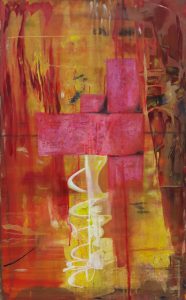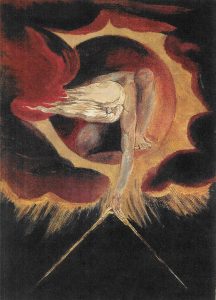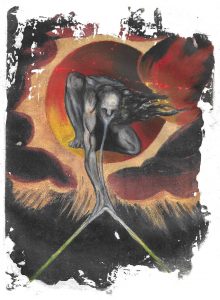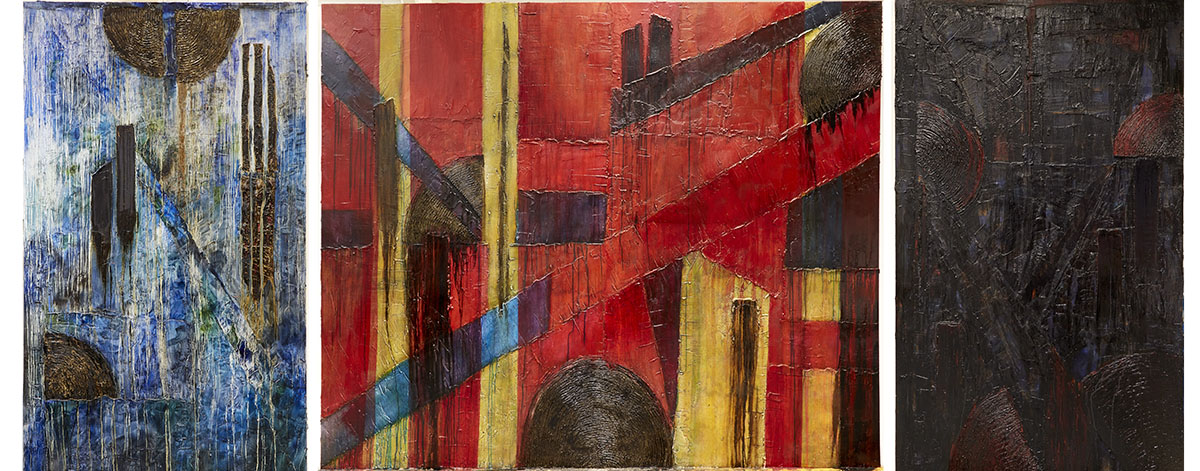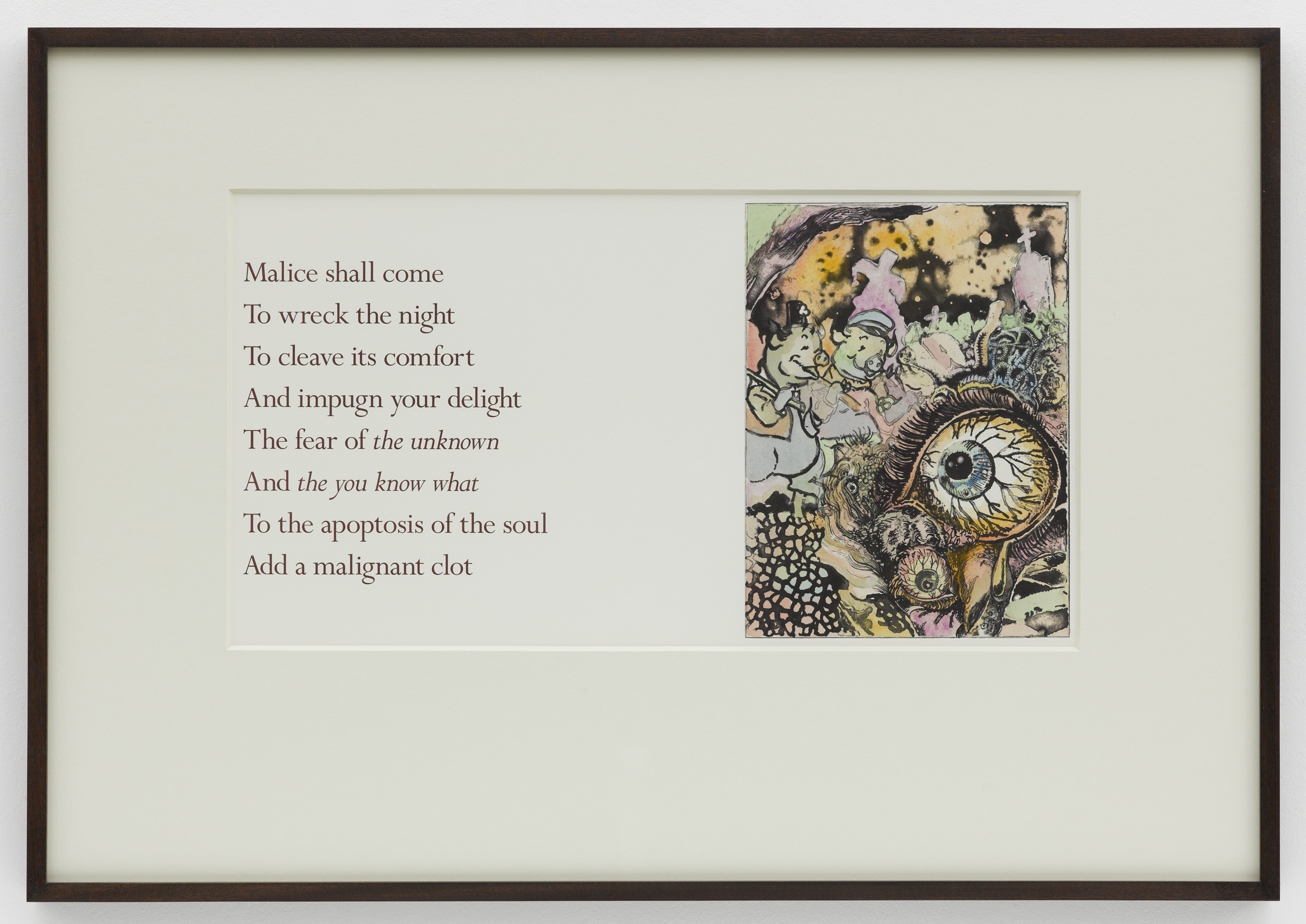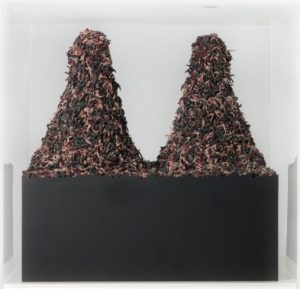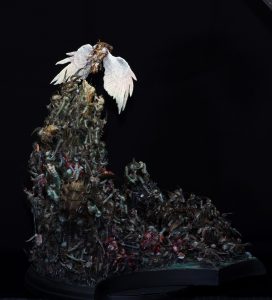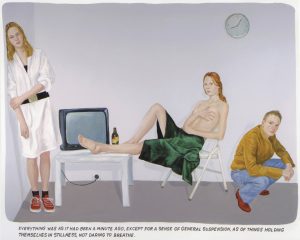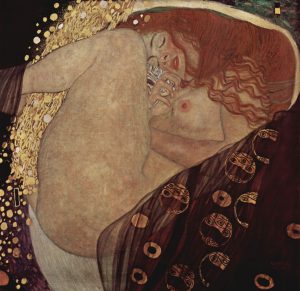When rescaling work there are a number of factors to consider. The materials used become of increasing importance, can they withstand the process, how much will it cost, will it need structural support, etc. Composition also requires much consideration, when going bigger do you need to account for perspective, is the intricacy of the work feasible when going smaller? Most importantly, does the work continue to say what you want it to say in this new scale?
In order to consider reproducing the work presented [fig1] on a smaller scale there are a list of changes that would be required to make. The work was originally painted on cartridge paper, and on a smaller scale, it is easier to overwork the paper and tear it would therefore have to be primed better or an alternative material chosen. In this instance, I would choose to use canvas stretched over board, primed with a fine, gesso plaster mix. This is because it provides a rigidity to it that would help the work survive the screen printing process more. The printing process would have to be applied ore delicately using pipettes to apply inks and soaps whilst applying the printing mediums with small teaspoons.
The work would also need some compositional changes, at a scale such as A4 or A5 the work would become too intricate to reproduce accurately even with 000 brushes when considering my own skills as a painter. Due to this, the composition would need to be suitable simplified, in this case removing some of the finer brush marks. When scaling down cost becomes less of an issue, however if I was scaling this up I would want to consider using acrylic paints over oils or whether or not to use paper, board or canvas to work onto.

